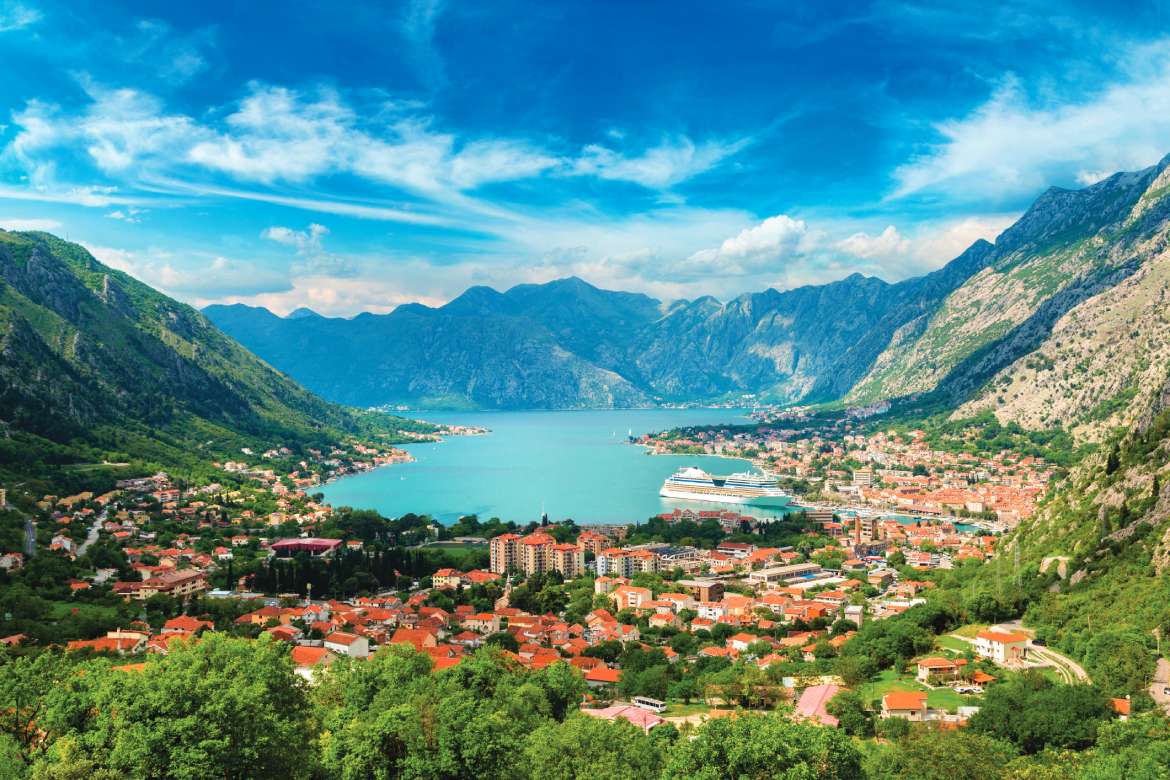Vacationing in the Balkans offers a unique and diverse experience, with a blend of cultures, cuisines, and landscapes.
I am on the cold, concrete floor of a communist-era bunker holding my head with both hands to keep it from splitting open. The room is a spinning blur of concrete cinder, and I feel like I’m conjuring the agony of millions of Albanians once living under authoritarian rule. I am at Bunk’Art, a combination museum and art gallery that once served as the fallout shelter of paranoid dictator Enver Hoxha, and I have just hit my head hard on one of the bunker’s low-beamed ceilings. I’m also in a great mood; it’s rare I get to explore a country not a single person I know has ever visited. As the locals like to say, “It’s everyone’s first time in Albania.” I am at the beginning of a 7-day Balkan adventure that will also include Montenegro and Croatia.
My arrival in the capital of Tirana happens the night before. I reach the city via an 80-minute flight from Athens and am feeling tanned and rested after four days of sunning myself nude on the beaches of Mykonos, chased with nights out on the town cruising Euro gays from across the continent. Now I am landing in Albania, a country lacking a single queer bar.
At the airport, the driver I arrange for in advance is late and I’m worried he may end up a no show. When he does arrive, it’s a long, painful crawl into the capital at rush hour. So slow in fact, that at one point my driver swings open the door, plops down on the side of the road, and proceeds to smoke a cigarette. But there’s little to complain about. It’s a balmy 80 degrees, the sky is blue, and the clouds above are fat and puffy like the thought bubbles you see in a Sunday morning cartoon. Also, I’m in Albania!
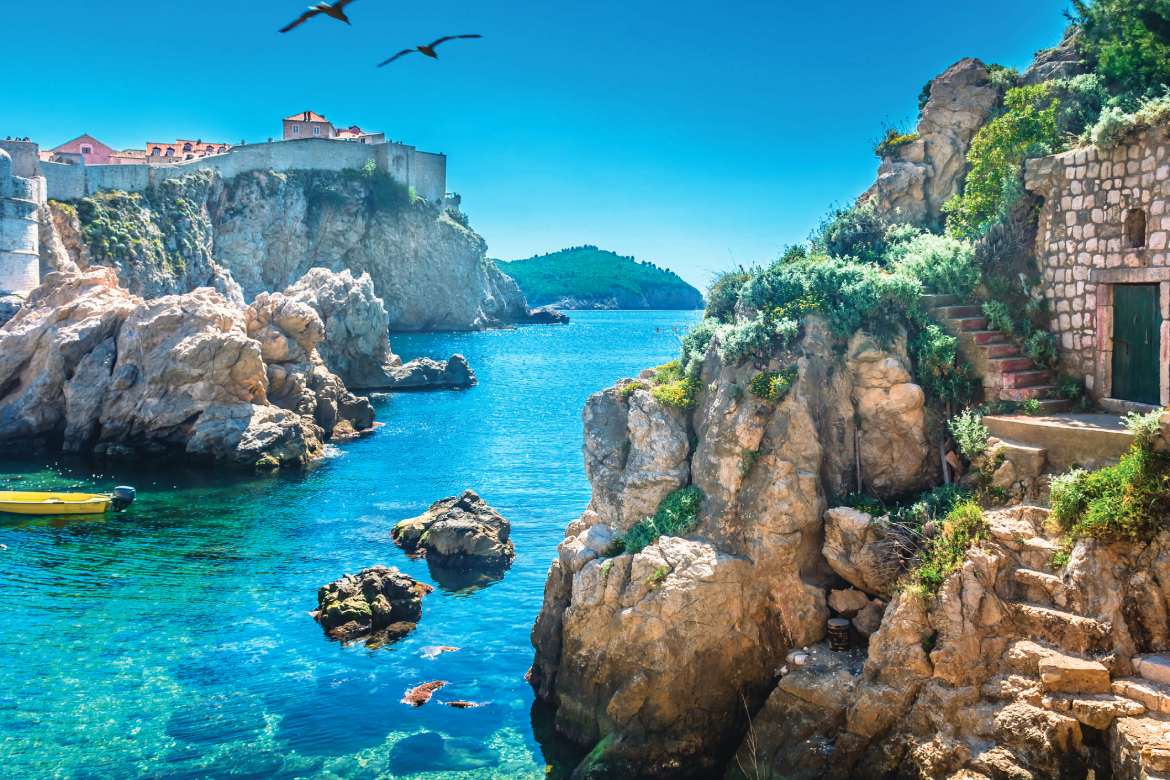
One of Numerous Game of Thrones Locations in Croatia (Photo by Dreamer4787)
For decades, Albania was a country shrouded in mystery, even to its neighbors. A Dutch couple I meet tell me that while Albania was under communist rule it was considered “the North Korea of Europe” thanks to Hoxha breaking ties with China and the USSR. Unlike Croatia, which has zoomed to the top of tourist itineraries thanks to Game of Thrones fandom and irresistible island hopping from Hvar, this Balkan nation remains mostly unknown.
A first reason to love Albania is that it’s cheap. It might be coastal Europe’s last true bargain. My hotel, for example, the delightful Garden B&B is set back behind a heavy gate, boasts clean and simple rooms, an excellent daily breakfast, and costs only around $40 nightly. But the bargains don’t stop there. After taking a quick nap, I head for dinner. Because night has already fallen, I am shielded from the city’s drab, Eastern Bloc architecture, and instead enticed by the sights, sounds, and energy of a European capital alit on a promising Thursday night. At restaurant Era, my server is a kind, older gentleman who immediately flips the menu to the English section. He speaks perfect English, which is a great relief for me as I unfortunately don’t speak a word of Albanian.
Mistaking the dirt-cheap prices for small portion sizes, I accidentally order three “main” dishes including a flatbread piled high with arugula, tomato and feta, a lusty beet and turnip salad, and a duo of spicy Kosovo sausages. I look ridiculous with this much food, but it’s all wonderful (it helps that I’m starving) and I manage to inhale almost all of it. The price for this feast including tax, service, and beverage is $18.
I like that traveling somewhere new always offers a rebirth of sorts. In the same way childhood is both terrifying and exciting as you take your first few hesitant steps into the world, a visit to a foreign country offers the same promise of turning those first few stumbles into confident strides as you learn the lay of the land and cement a few words and phrases in your brain. I’m both nervous and thrilled as I stumble back to my hotel, a belly now full of beets and meats.
The next morning, I head to downtown Tirana, a city buzzing with Friday activity. The bus I’m trying to catch is pulling away from the curb, swiftly I might add. To my surprise, I find myself hauling ass after it (I hate waiting for busses). It seems a completely futile attempt, but to my surprise, an arm reaches out of nowhere and pulls me aboard, a first and necessary act of kindness I experience in Albania. I am off to the outskirts of the city, where my first encounter with the country’s communist-era history awaits.
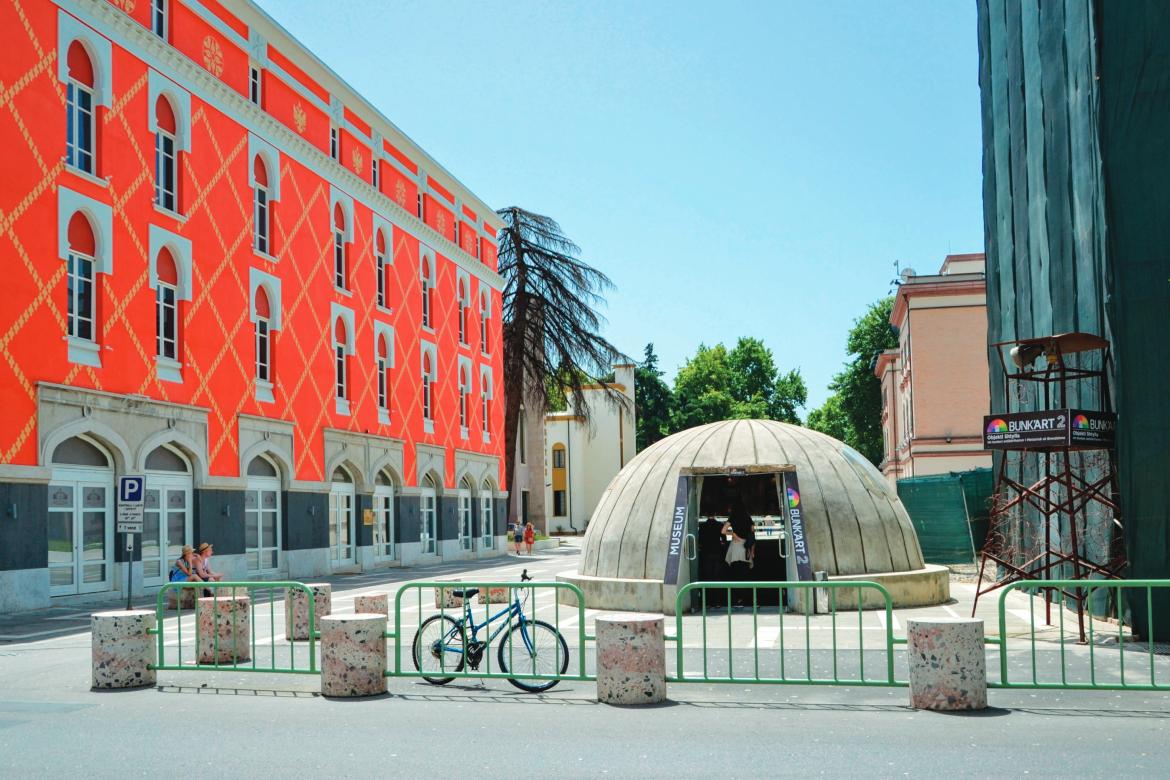
Bunk’art Entrance in Tirana (Photo by PaulSat)
Aside from a little head trauma, Bunk’Art is fascinating. It’s hidden from public view, and reaching its entrance feels a bit like the buildup to a Disney ride. Inside, a tangle of narrow hallways reveals empty rooms built to house Hoxha and his military generals should they be bombed by the West. So convinced was Hoxha that the country was under constant threat, he constructed more than 173,000 bunkers for his people nationwide. Today, they are barren, or function as residential accommodations, art galleries, and shelters for the homeless.
Within walking distance of Bunk’Art is the Dajti Ekspres, an Austrian-built gondola system (6 euros round trip) that whisks passengers into the nearby mountains, which in part make up Tirana’s most breath taking attraction, Dajti National Park. Established in 1966, the park offers a wonderful respite from the city. As the gondolas haul passengers into the mountains at a leisurely pace, they reveal pastoral vistas below that look straight out of The Sound of Music.
Datji Mountain restaurant is one of several attractions awaiting passengers at the top. I have a simple pizza here and it’s just fine. It’s part of a complex of things to see and do, most of which are entirely skippable, including an adventure park, shooting range, and mini golf course. But it’s a pleasure just to walk around, and there are some ruins within strolling distance that are worth checking out.
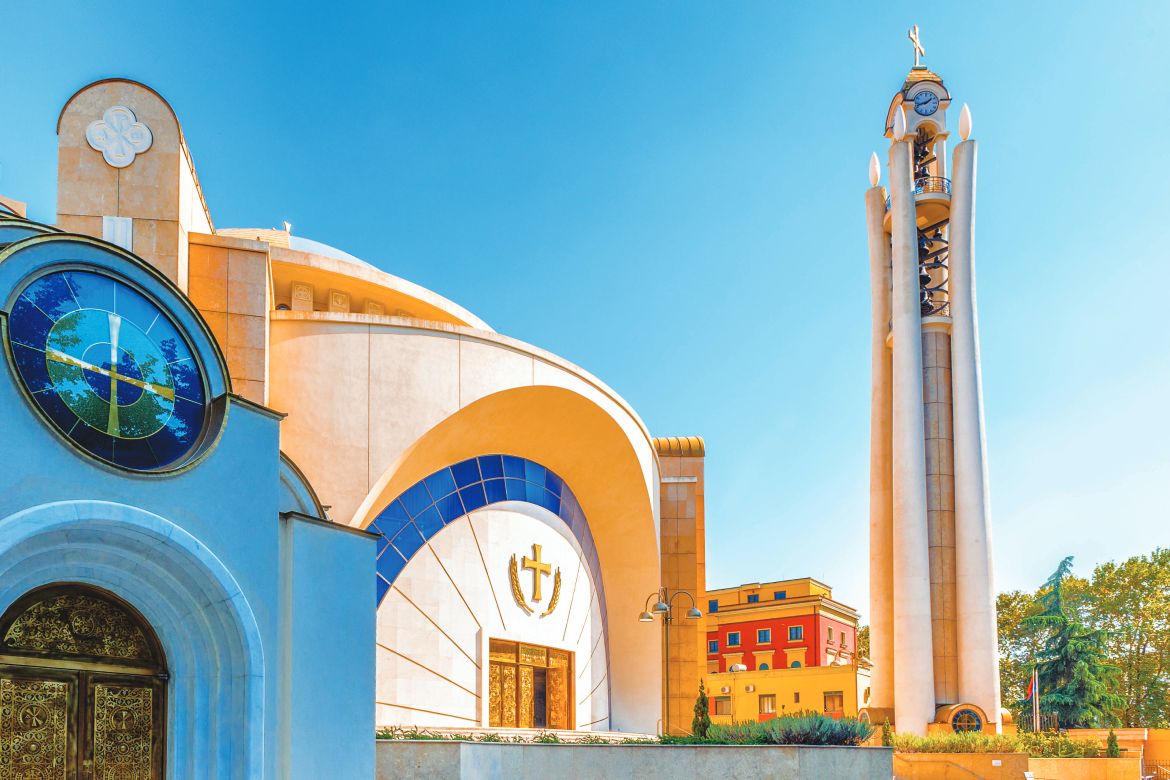
Muslim mosque in Tirana, the capital of Albania (Photo by Anton Ivanov)
One thing that is true about Tirana is that it suffers from a lack of architectural beauty. Though the city boasts a few highlights, including the fascinating Pyramid of Tirana (currently under renovation), the city today offers a mishmash of competing styles, including communist-era municipal buildings, gleaming, modern high rises, and (thanks to current prime minister Edi Rama who served as the city’s mayor in the early aughties and is himself an accomplished painter) numerous apartment buildings repainted in vivid colors. But Tirana is not without its charming parts.
The first is The Grand Park of Tirana, a 289-hectacre park which includes an artificial lake, several restaurants, kiosks, and paved walkways lined with streetlamps. At night, the place is downright magical (and abuzz with activity) and it is here that I have dinner at Mullixhiu, an elevated eatery in a lodge-like setting, that is committed to Albania’s slow food movement. When I arrive at 8 P.M. I am the only patron in the place. Within an hour Mullixhiu is full. Its regional cuisine intimidates at first (veal brain and pickled cabbage, for example), but I settle n a 3-course meal that includes jufka (a pasta) with wild berries. The meal, including wine, is just $20.
Afterward, I take a stroll through Blloku, the city’s most fashionable neighborhood. This is where Hoxha once lived, and only the city’s elite were allowed to reside here during his reign. As a result, today the area is tree-lined and immaculate, filled with lively bars, shops, and eateries. I stop for a late-night latte and a local café. A soccer game of some importance is happening, so even though no one here is openly gay, there’s a ton of man-on-man touching every time Albania scores. (This might be the closest to gay sex this country ever gets.)
The following day I am in Durrës, the country’s most popular beach destination, and a bit of a shabby one at that. Located about an hour’s bus ride from downtown Tirana, the town offers endless beachfront resorts crammed together along the strand that alternates in appearance between fashionable, dated, and downright decrepit. The whole scene reminds me of a vintage postcard, the kind that rewards thrift store scavengers by showing how different a city skyline looked decades ago. In Durrës the past is apparently also the present and it should be noted that the town is also the country’s most popular seaside getaway.
Away from the beach and near the ice cream shops, souvenir stands, and hotels that line Bulevardi Epidamn is the Durrës Amphitheater, a fascinating relic of the Roman Empire and the largest one built in the Balkans. Constructed in the 2nd century and destroyed twice by earthquakes, it once had a seating capacity of 20,000 and remains a photogenic piece of arcana.
For my last dinner in Tirana I return to Blloku and to a multi-level beauty of a restaurant called Salt. This is where the city’s young and fashionable (and English speaking) are, and it hardly matters to me that you can order a whole Catalan lobster for $7 or an entire seafood tower for $9 at this sushi, seafood, and Mediterranean-focused hotspot. Instead, I am completely smitten with the cute bartender who offers me a shot that comes with the clinking of glasses and requisite exchange of eye contact (the most action I’ll get in Albania).
A car is waiting for me the next morning to drive me up the coast and into Montenegro where I’m spending a night along the stunning Bay of Kotor. What lies ahead will be a beautiful day on the road, but also a frustrating one. Through a website called mydaytrip.com I hire a driver to take me on the half-day journey from Tirana to the city of Kotor for about 100 Euros. What I’m expecting is white glove service, a “Driving Miss Daisy”-style journey where I’ll sit quietly in the backseat while my driver occasionally nods to points of interest like when an airline pilot lets passengers know the plane is now passing over the Grand Canyon.
Instead, what I get is a pushy, boorish, and foul driver who offends me in multiple ways. For starters, we’re in the middle of another Covid surge and he wants me to sit next to him in the front seat without a mask. Secondly, he makes me suffer a rare discomfort, that of feeling on edge about my sexual orientation. He asks me questions as we drive along like my marriage status and what do I think of the ass of such and such woman walking down the street. He’s even belligerent about my travel plans: Why am I spending only one night in Montenegro, a country he believes is vastly superior to both Albania (whose architecture he hates) and Croatia (only beaches, nothing else he says).
Wait, there’s more. I have to buy him lunch because the café we stop at accepts only cash and he doesn’t have any Euros on him. Neither did I since Albania keeps its own currency, but that doesn’t stop him from having me go to ATM and take enough money out to feed both of us. Lastly, through the website I paid an additional supplement to stop at Sveti Stefan, a luxury resort island off the Mediterranean coast, but we don’t even drive by it thanks to an alternative route he takes which adds several hours to the journey.
There is one bright spot, however. One thing he likes about Albania is that about 40 minutes outside of Tirana there is an agrotourism farm called Mrizi i Zanave (it’s not at all lost on me that in English this translates to “place of faeries”) that is constructed from an old prison and it’s a beautiful, remarkable place. My driver bullies one of the staff into providing a mini tour and we wander in and out of old jail cells where cheese is now being cured and meat is being smoked. There are vineyards behind the prison and also an onsite farmhouse providing guest rooms to overnight tourists. He tries to push me into waiting an hour until lunch service, but I refuse.
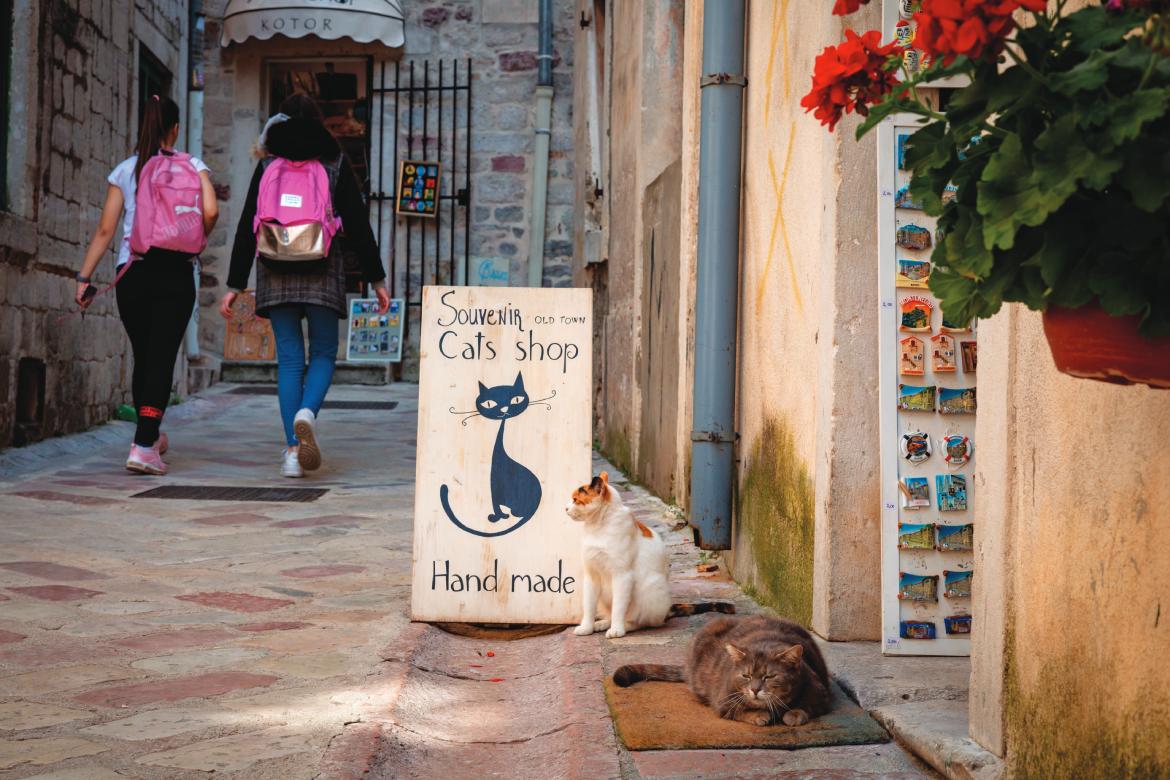
Old Town Kotor (Photo by Kati Lenart)
The walled, medieval city of Kotor, Montenegro sits on the Bay of Kotor, which itself flows into the Adriatic Sea and has a jigsaw shape. The numerous towns that sit upon the bay are each distinct. There is Budva, a city with a shiny exterior that thanks to its proliferation of flashy restaurants, nightclubs, and beaches has been dubbed the Miami of Montenegro. There is also yacht-filled Tivat, UNESCO World Heritage Site Perast, and many others.


